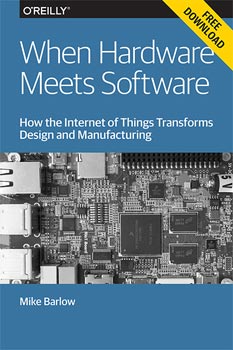Editor’s note: this is an excerpt from our recent report, When Hardware Meets Software, by Mike Barlow. The report looks into the new hardware movement, telling its story through the people who are building it. For more stories on the evolving relationship between software and hardware, download the free report.
The Internet of Things doesn’t presage a return to the world of smoke-belching factories and floors covered with sawdust. But it does signify that change is afoot for any business or activity related to the information technology or communications industries.“Not everyone will become a hardware designer,” says Joi Ito, director of the MIT Media Lab. But many students, software engineers, and entrepreneurs will see the advantages of learning how to work with hardware. “It’s never too late to learn this stuff,” says Ito, “if you decide that you want to do it.”
At minimum, software engineers should learn as much about design and manufacturing as possible. “Buy an Arduino and start building. Everything you need to learn is on the web,” urges Jordan Husney, an avid hardware hacker who serves as strategy director at Undercurrent, an organizational transformation firm and digital think tank in lower Manhattan.
In the same way that software people will have to reconfigure their modes of thinking, hardware people will need to learn new technical skills and new ways of looking at problems, says Husney. “They will have to become more comfortable with uncertainty occurring later and later in the process,” he says. “Hardware engineers will keep things in the realm of bits (as opposed to committing them to atoms) by sharing designs using digital collaboration and simulation tools virtually, while testing multiple physical prototypes. I think we’re going to see the supply chain start to shift around these concepts.”
The idea of rapid and continuous iteration (some prefer to call it “continuous improvement”) dovetails with the notion that designers will have to become accustomed to higher levels of uncertainty further into the manufacturing process. “It used to be that you’d ship a product and it was considered finished. Now, folks are shipping beta products (with unfinished hardware and software) to gather more feedback from the field,” says Husney. “We’re seeing this with Coin [a start-up with a card-like device that stores information about the credit cards you would normally carry in your wallet] and Energy Aware, which has just begun shipping its beta whole-home energy monitors.”
Designers now see their products as platforms, says Husney. “With remote connectivity and remote updates, they’re able to iterate and add value to products that their customers already own. My iPhone, for example, gets better every day. Apple continuously produces new operating system enhancements and adds new functionality. The app platform allows software makers to increase the value of the hardware in my pocket.”

